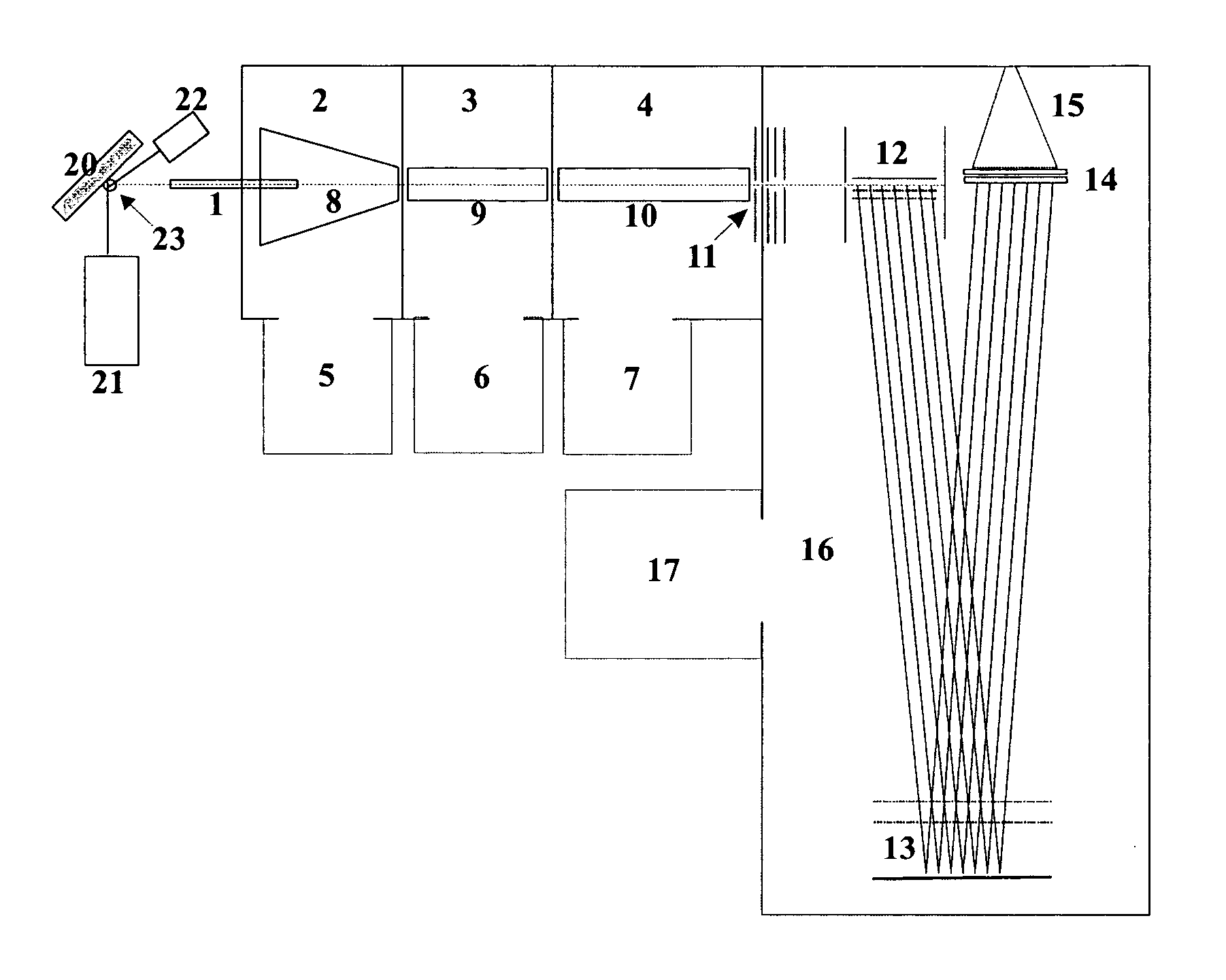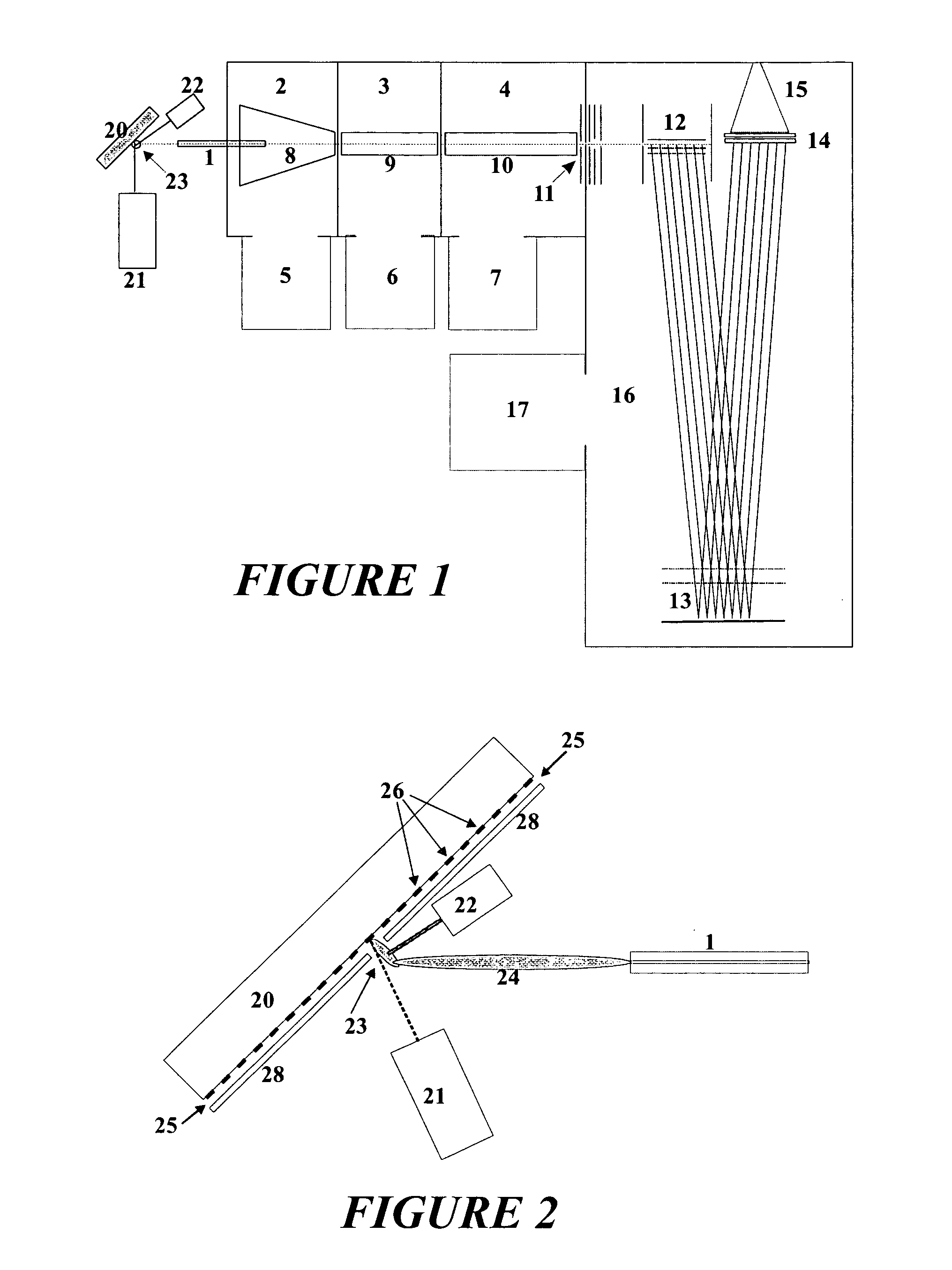Protein profiles with atmospheric pressure ionization
a technology of atmospheric pressure and protein profiles, applied in the field of acquisition of mass spectra of complex biomaterial mixtures, can solve the problems of poor reproducibility of mass values, poor mass resolution, and inability to accurately measure the mass value, and achieve the effect of accurate mass and simple laser desorption at atmospheric pressur
- Summary
- Abstract
- Description
- Claims
- Application Information
AI Technical Summary
Benefits of technology
Problems solved by technology
Method used
Image
Examples
Embodiment Construction
[0030] The baffling similarity between vacuum-MALDI mass spectra in linear TOF instruments and special-type AP-MALDI mass spectra in reflector TOF mass spectrometers is not yet fully explained. It may be due to an immediate cooling of the metastable molecules generated in the generally harsh desorption process. The cooling at atmospheric pressure seems to take place very rapidly, within microseconds or shorter, by the ambient gas. The cooling seems to affect not only the thermal movement in the heated plasma of the desorption cloud, but also the internal energies of the ions and molecules, which are consequently no longer instable and do no longer decompose in the further process of analysis. For the success of the cooling process it seems to be required that the momentary plume of desorbed material is very small.
[0031] A particular embodiment of the invention consists in a method for acquiring mass spectra of complex analyte mixtures from biomaterial, the method comprising the fol...
PUM
| Property | Measurement | Unit |
|---|---|---|
| Frequency | aaaaa | aaaaa |
| Frequency | aaaaa | aaaaa |
Abstract
Description
Claims
Application Information
 Login to View More
Login to View More - R&D
- Intellectual Property
- Life Sciences
- Materials
- Tech Scout
- Unparalleled Data Quality
- Higher Quality Content
- 60% Fewer Hallucinations
Browse by: Latest US Patents, China's latest patents, Technical Efficacy Thesaurus, Application Domain, Technology Topic, Popular Technical Reports.
© 2025 PatSnap. All rights reserved.Legal|Privacy policy|Modern Slavery Act Transparency Statement|Sitemap|About US| Contact US: help@patsnap.com


